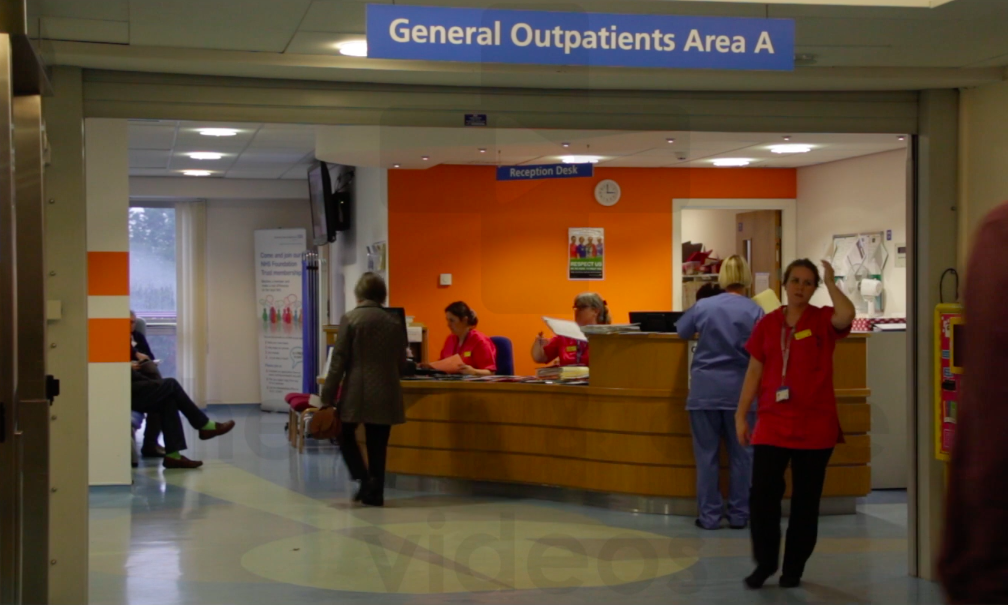As a simple but effective tool, videos can help reform outpatient clinics.
By educating patients through video, we can increase capacity and improve efficiency of outpatient clinics. However they need to be implemented correctly.
Here we’ll take a look at how videos can help reform outpatient clinics and the next steps your organisation can take to use video effectively.
Why do we need to change outpatient clinics?
Currently, 7% of the NHS budget is spent on specialist outpatient clinics. This may not seem like much, but it does account for over 60 million attendances each year.
Many medical professionals, politicians and patients are calling for reform as the current outpatient system is outdated and not fit for purpose.
Often, patients are sent to outpatient clinics when they don’t actually require secondary or tertiary care. To improve outpatient clinics admission the process must be reviewed.
As the number of patients with co-morbidities rise, so does the need for a multidisciplinary approach. However, current outpatient processes do not allow for this and result in poor patient care as they have to make multiple appointments with several consultants that do not communicate with each other.
This is also true for patients with long term conditions. Often they’ll see several consultants on multiple sites, when it would be much better for them to receive continuous care from the same physician.
To fix all of these issues, there must be a new focus on care planning, supported self care and new information sharing techniques. We believe that video can help with this.
4 ways videos can help reform outpatient clinics
Technology is a key part of any reform in the medical sector. It simplifies and automates processes and reduces risks for patients. Therefore it makes sense that technology will be used to reform outpatient clinics.
Video is a key part of this shift; it’s a simple and familiar medium that can make a huge difference to patient pathways. We truly believe that videos can help reform outpatient clinics; here are 4 ways we think this might happen:
1. Giving patients information about their condition, medication or procedure
An informed patient is a happy patient; however not all consultants have the time to go into detail about conditions, medications or procedures during appointments.
Videos can explain the intricacies of each of these topics and answer all the common questions that patients have. They offer a standardised response, so you can be sure that your patients are getting all the information they require.
As the videos are generally under two minutes, doctors can show patients them during appointments or even in the waiting room. Then the consultant can answer any further questions and go into the specifics of the individual’s care.
This will create a much more personalised approach to outpatient care and, hopefully, improve capacity and the patient experience.
Video in outpatient care, example 1: ‘What is Deep Vein Thrombosis and am I at risk?’
<
2. Minimising anxiety about outpatient visits
Outpatients can get very anxious about hospital visits and procedures. Sharing videos with them in advance will help prepare them and ensure that the information sinks in before the appointment.
If the consultant needs to broach another topic with the patient during an appointment, they can ask patients to watch a video at home at their own pace. This will help ensure that they take all the information in.
Video in outpatient care, example 2: ‘Having a CT scan of your chest, abdomen and pelvis with contrast’
3. Reducing the need for follow-up appointments
Hospital staff can prescribe instructional videos that encourage self-care at home to patients. They will tell them exactly how to complete self-care techniques.
This can vastly reduce the risk of complications and the need for patients to go in for follow-up appointments.
Video in outpatient care, example 3: ‘Monitoring your Linq Cardiac Monitor at home’
4. Increasing staff capacity
In some cases, videos can replace face-to-face appointments like pre-procedure assessments. Really, these are just to inform the patient about the process, but it takes up a lot of consultant and nurse time.
By sending patients a video containing the same information, organisations can eradicate the need for these appointments and increase capacity for actually completing the outpatient procedures.
Video in outpatient care, example 4: ‘Preparing for your operation at home before you come into hospital’
Health & Care Videos can vastly improve the patient experience as they can streamline processes and ensure that patient’s know exactly what’s going on.
By offering these videos online in the form of a library or showing them on your website, you’ll give patients access to these helpful resources quickly and easily. This is the first step in reforming your outpatient clinics.
To find out more about the videos in our secondary library, visit our demo site here.

